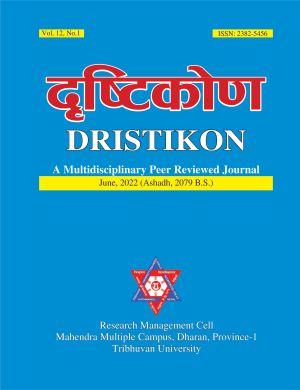Economic Analysis of Public Expenditure, Revenue, and Resource Gap in Nepal
DOI:
https://doi.org/10.3126/dristikon.v12i1.46121Keywords:
variation, fiscal deficit, root mean squared error, overall deficit, ex-post forecastingAbstract
The aim of this study is to look at the influence of government spending and revenue on Nepal's government resource gap. The study employed a descriptive and exploratory research design. The secondary data covers 26 years from 1995 to 2020 and was collected from various economic surveys in Nepal. Econometric tools like descriptive statistics, correlation analysis, Augmented–Dickey-Fuller test, unit root testing, regression analysis, and ex-post forecasting are used to explore the prediction of the dependent variable. For model validity, the researchers utilized the LM test and Jarque-Bera test. There is a moderately positive relationship between government expenditure and the resource gap, however, there is a negative impact of government revenue on the government resource gap in Nepal. Government expenditure and income are individually significant in determining the size of the resource gap in Nepal. The value of the root mean squared error is 0.986, which is very small. Therefore, the gap between the actual value and the predicted value is small, and they move together. It is suggested that policymakers increase revenue and manage government expenditure based on ground reality to decrease the resource gap. A government resource gap study can assist policymakers in determining how their present resource levels are assisting them in meeting their objectives. The results, findings, and methods of this study are not affected by what other researchers have found and concluded.
Downloads
Downloads
Published
How to Cite
Issue
Section
License
© Research Management Cell, Mahendra Multiple Campus, Dharan

